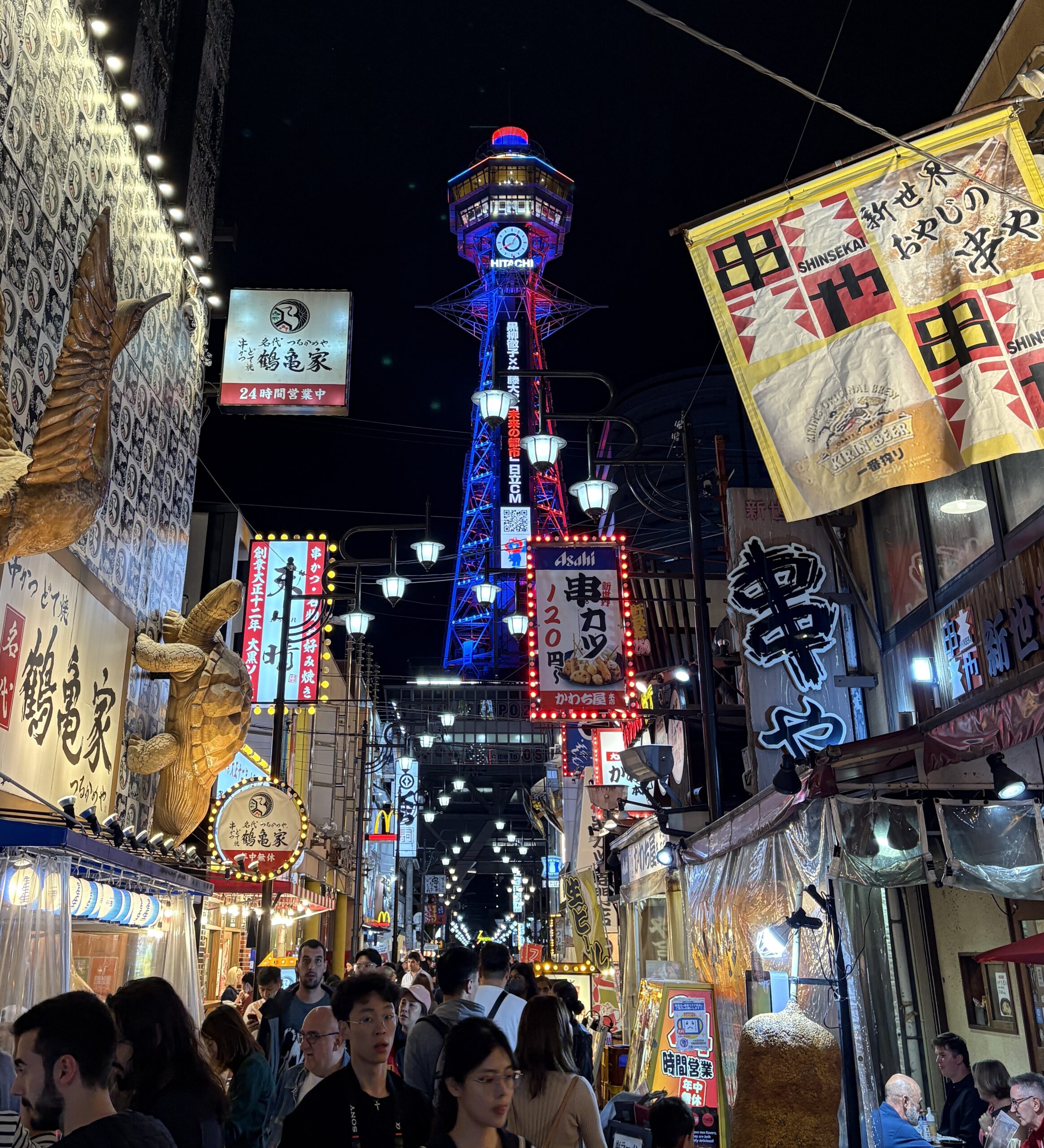Is Osaka Worth Visiting? Honest Guide
Osaka is one of Japan’s most exciting cities, blending a world-famous food scene with a warm, laid-back vibe you won’t find everywhere in the country.
It’s part of Japan’s famous “Golden Triangle” which is, Tokyo, Osaka, and Kyoto, which makes it a regular stop for many first-time visitors wondering, is Osaka worth visiting?
From the moment you arrive, the difference is clear: Osaka feels noticeably more relaxed than other major Japanese cities, with a friendlier, more casual atmosphere.
While it’s often overshadowed by Tokyo’s big-city buzz and Kyoto’s cultural charm, Osaka has a personality all its own, a little louder, a little friendlier, and a lot tastier.
If you’re planning a trip to Japan, there’s a good chance Osaka will end up on your itinerary, either as a main destination or a base for exploring nearby gems like Kyoto, Nara, and Kobe. But like any city, it has its strengths and its quirks.
Some travelers leave absolutely hooked, while others feel it’s best enjoyed in small doses.
In this guide, I’ll walk you through both the reasons Osaka is worth visiting and a few drawbacks to keep in mind, so you can decide how it fits into your Japan adventure. if you’re already convinced, my four-day Osaka itinerary will help you plan the perfect balance of must-see spots, local eats, and day trips.
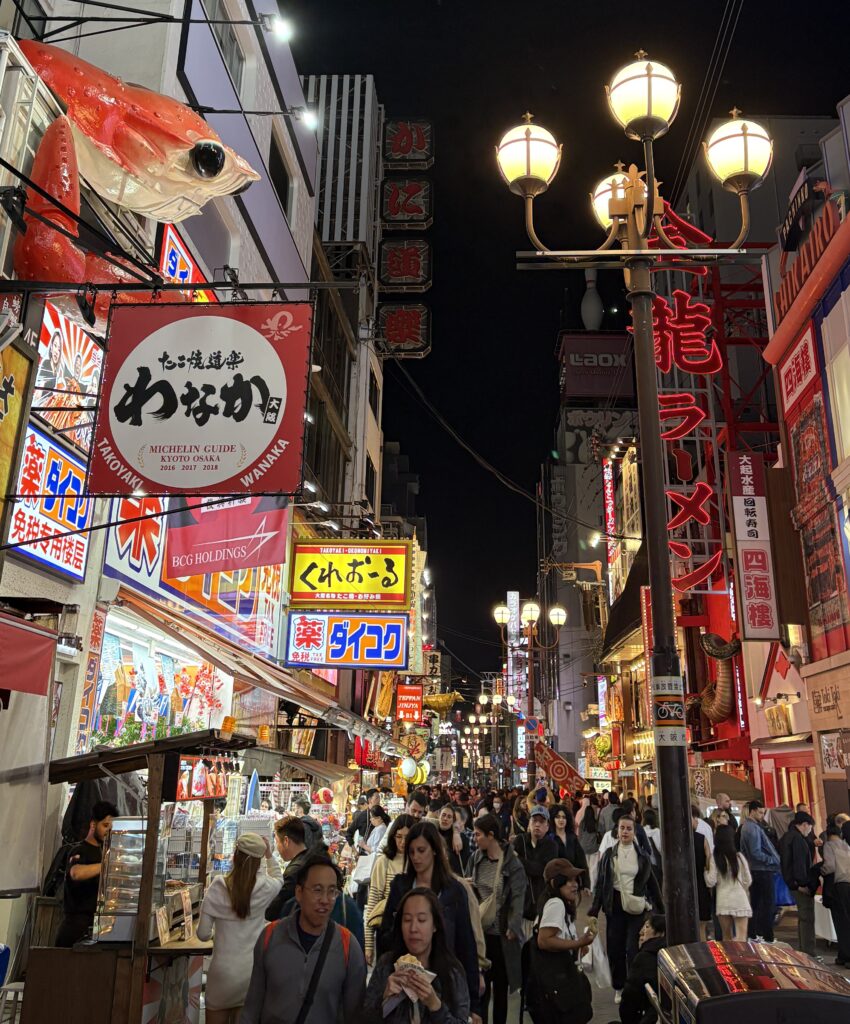
The Positives of Visiting Osaka
While Osaka might not have the sheer scale of Tokyo or the historic charm of Kyoto, it shines in ways that make it a must-visit for many travelers.
From its legendary food scene and top attractions in Osaka to its easygoing atmosphere and convenient location, the city offers experiences that feel both exciting and approachable.
Personally, it stood out to me for its unreal food and the way it blends big-city convenience with a laid-back charm you don’t always find in Japan. Here are some of the top reasons visitors fall in love with the city.
Food Capital of Japan
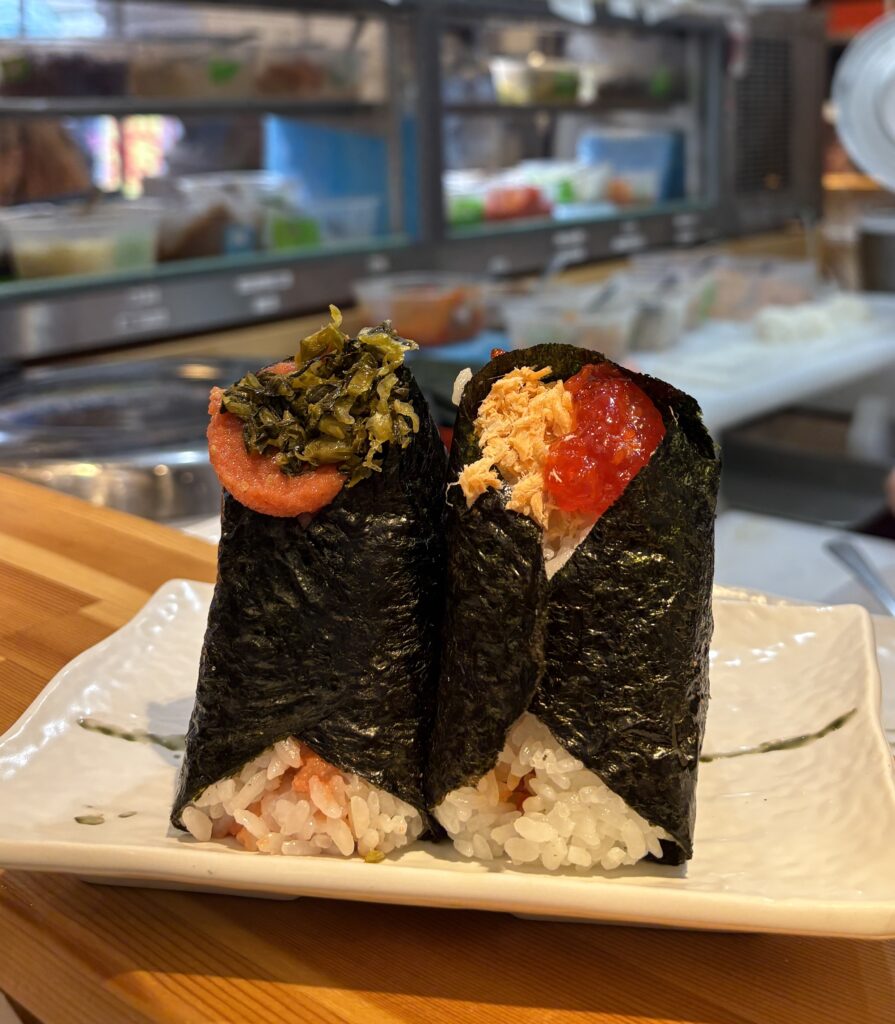
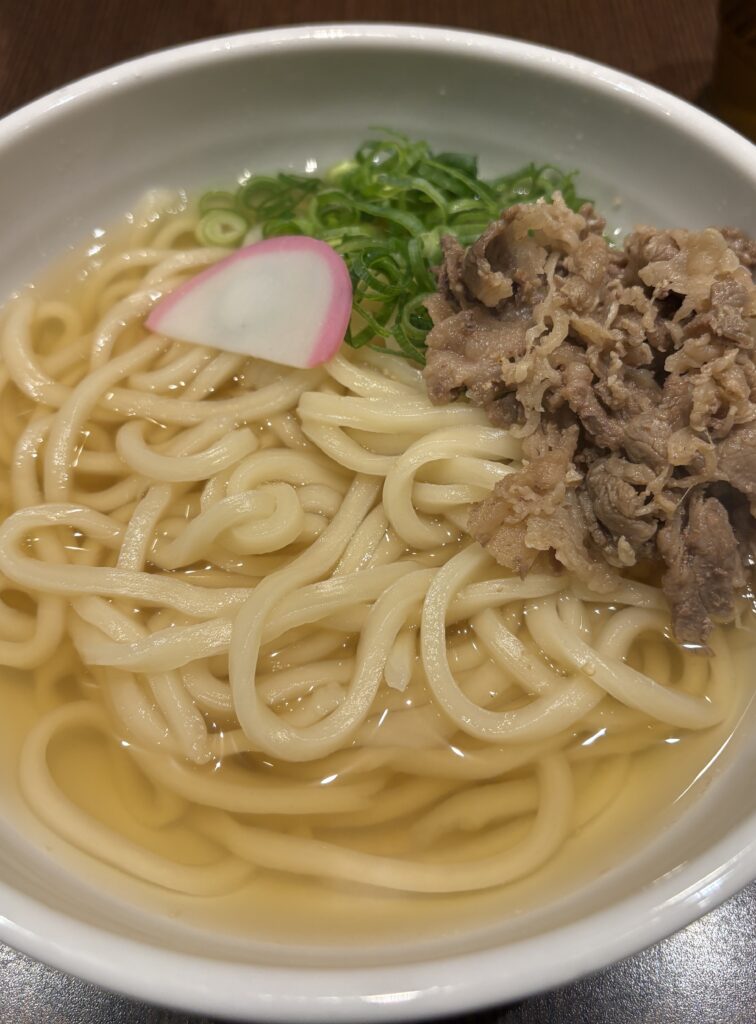
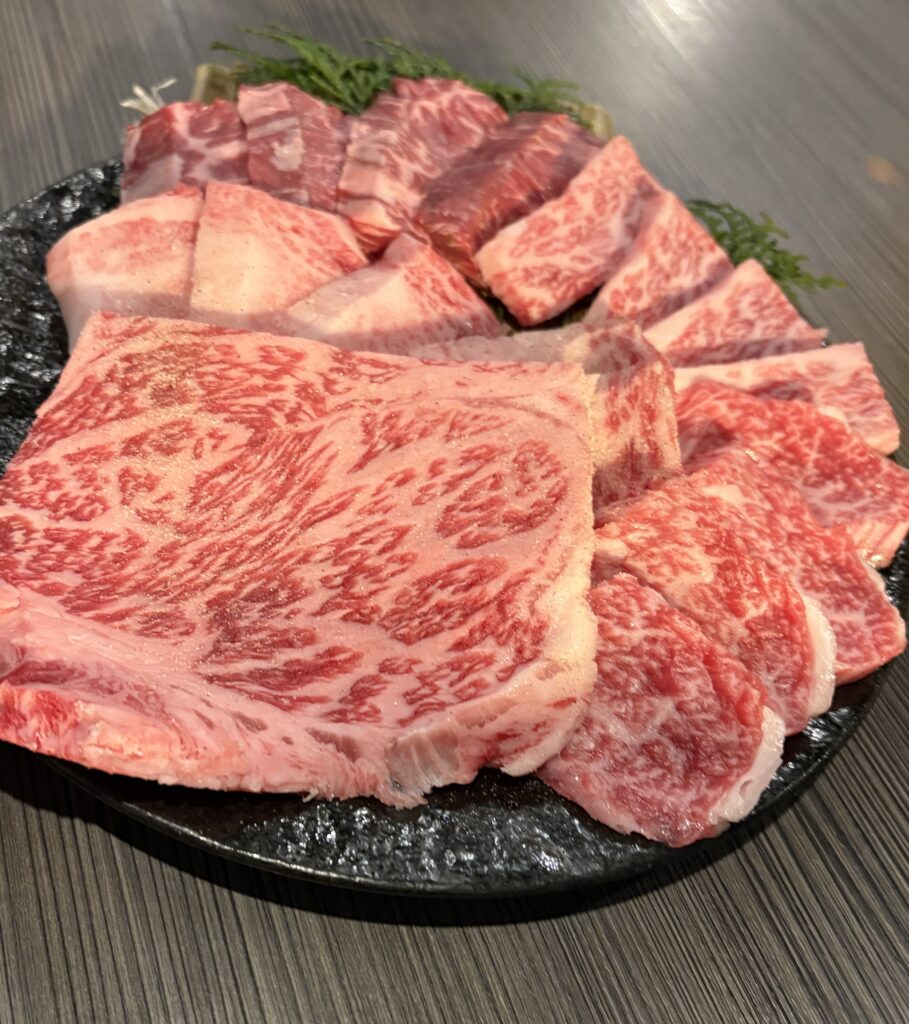
The food in Osaka is always the first thing people talk about, and for good reason. Nicknamed “Japan’s kitchen,” the city represents a huge range of Japanese cuisine from all over the country while also being home to its own signature dishes.
Takoyaki (octopus balls), okonomiyaki (savory pancakes), and kushikatsu (deep-fried skewers) are just a few of the must-try local specialties. Another dish I love to eat in Japan though it’s not a local speciality to Osaka is Gyukatsu, a delicious sizzling beef cutlet.
What makes Osaka’s food scene stand out isn’t just the variety, but the quality and accessibility. You can enjoy incredible meals here, the kind that might cost far more in Kyoto or Tokyo, at surprisingly affordable prices.
Dining also feels easier and less intimidating compared to Tokyo’s often reservation-heavy restaurants.
For food lovers like myself, this is hands-down the number one reason Osaka stood out.
Wandering down Dotonbori, the city’s most famous street food hub, is an experience in itself, but there are plenty of other great food streets and markets scattered throughout the city, each offering their own mouthwatering lineup. Just load up your wallet with yen, take a walk, and let your appetite guide you.
Laid-back & Friendly Vibe
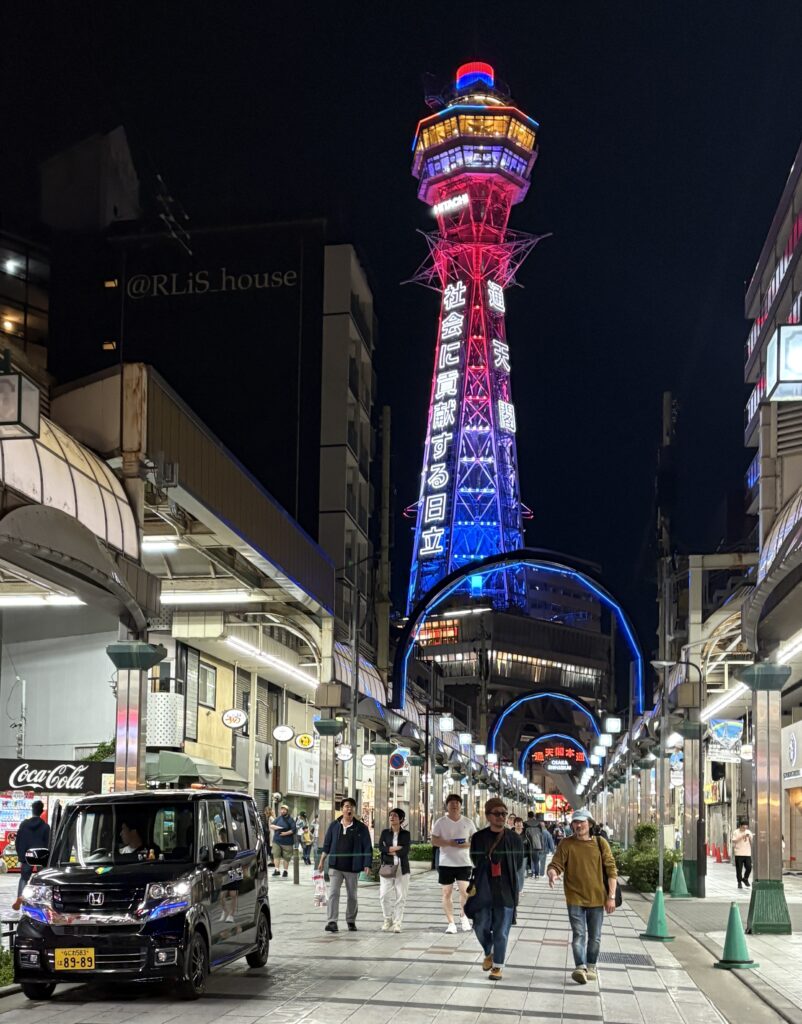
I still remember stepping out of the subway in Osaka with my luggage in hand and feeling slightly confused, “Wait, this is Japan?” Coming straight from Tokyo, the difference was instantly noticeable.
People were chatting casually on the street, locals stood eating food without a care, and the whole pace felt more relaxed.
In Tokyo, you’d never see this as often, in Shibuya, for example, street police will actually stop you from walking and eating at the same time. In Osaka, it’s just not a big deal.
Even small moments stood out, like when we arrived by Shinkansen from Tokyo and a station employee not only helped us but struck up a friendly conversation and gave us a small souvenir.
If you’re coming from the West or Europe, where friendly engagement with staff and strangers is more common, Osaka feels instantly more familiar compared to the rest of Japan, and that’s part of its charm.
Great Base for Day Trips

One of Osaka’s biggest advantages is its location, it’s perfectly placed for exploring some of Japan’s most iconic destinations without the hassle of changing hotels every couple of days.
Kyoto, Nara, and Kobe are all less than an hour away by train, making day trips from Osaka incredibly easy and affordable.
Kyoto offers a deep dive into Japan’s traditional side with its temples, gardens, and geisha districts. Nara is famous for its giant Buddha and freely roaming deer, while Kobe combines a beautiful harbor with one of the most famous beef dishes in the world.
The best part is that you can enjoy the buzz of Osaka in the evenings after spending your day somewhere completely different.
If you’re short on time, basing yourself in Osaka lets you experience a wide variety of Japan without overpacking your itinerary, or your suitcase.
Nightlife & Entertainment
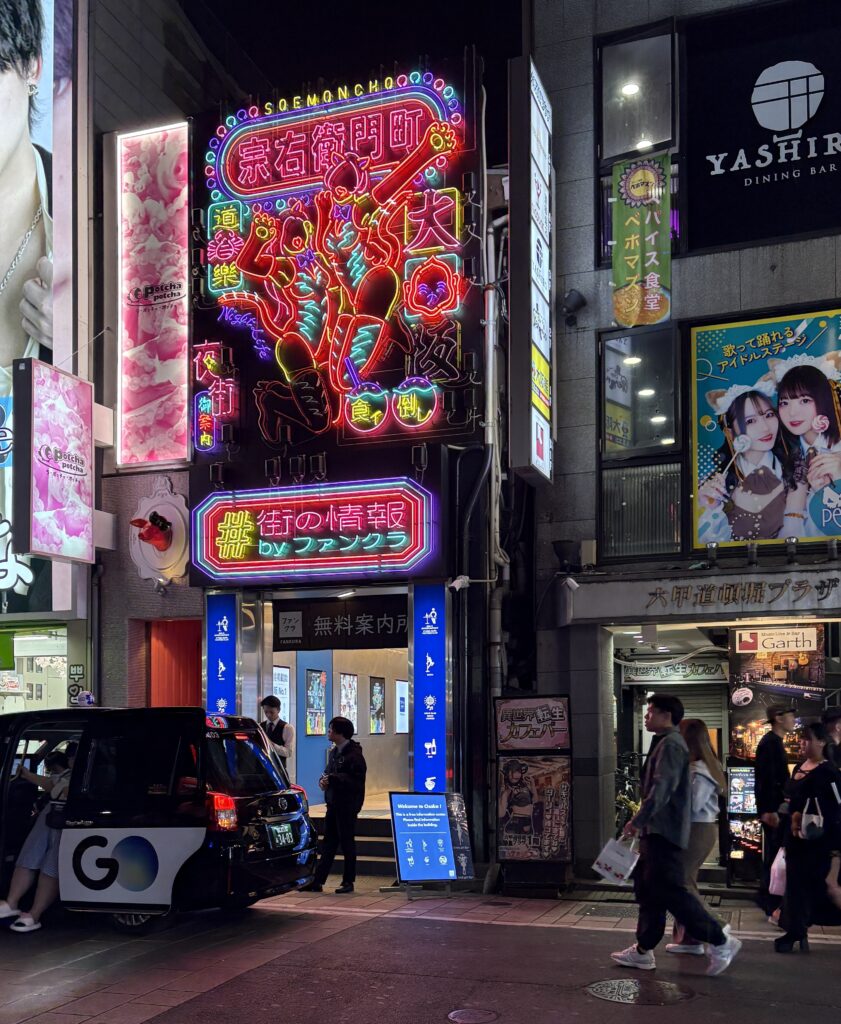
If you enjoy vibrant nights out, Osaka delivers in spades. Namba is the city’s nightlife hub, packed with neon lights, lively bars, izakayas, and late-night eateries where the energy doesn’t fade until well past midnight.
It’s also where you’ll find Dotonbori lit up in full color, a spectacle in itself even if you’re just walking around.
For something a bit different, head to Umeda, where rooftop bars and the Umeda Sky Building offer panoramic night views of the city. Osaka also has a strong live music and comedy scene, especially manzai (a style of stand-up comedy popular in the Kansai region).
Whether you want to sip cocktails overlooking the skyline, belt out karaoke with friends, or snack your way through late-night food stalls, Osaka makes sure your evenings are as memorable as your days.
Unique Attractions

Osaka has no shortage of sights that set it apart from other Japanese cities. Osaka Castle is the most famous landmark, surrounded by a beautiful park that’s especially stunning during cherry blossom season.
Then there’s Universal Studios Japan, a must-visit for theme park lovers and home to the incredibly popular Super Nintendo World.
Beyond the big names, you’ll find quirky spots like the Cup Noodles Museum in nearby Ikeda, the Tsutenkaku Tower with its retro charm, and the bustling Kuromon Ichiba Market, perfect for sampling fresh seafood and street snacks.
These attractions, along with the city’s mix of modern and traditional architecture, give Osaka a personality that’s entirely its own.
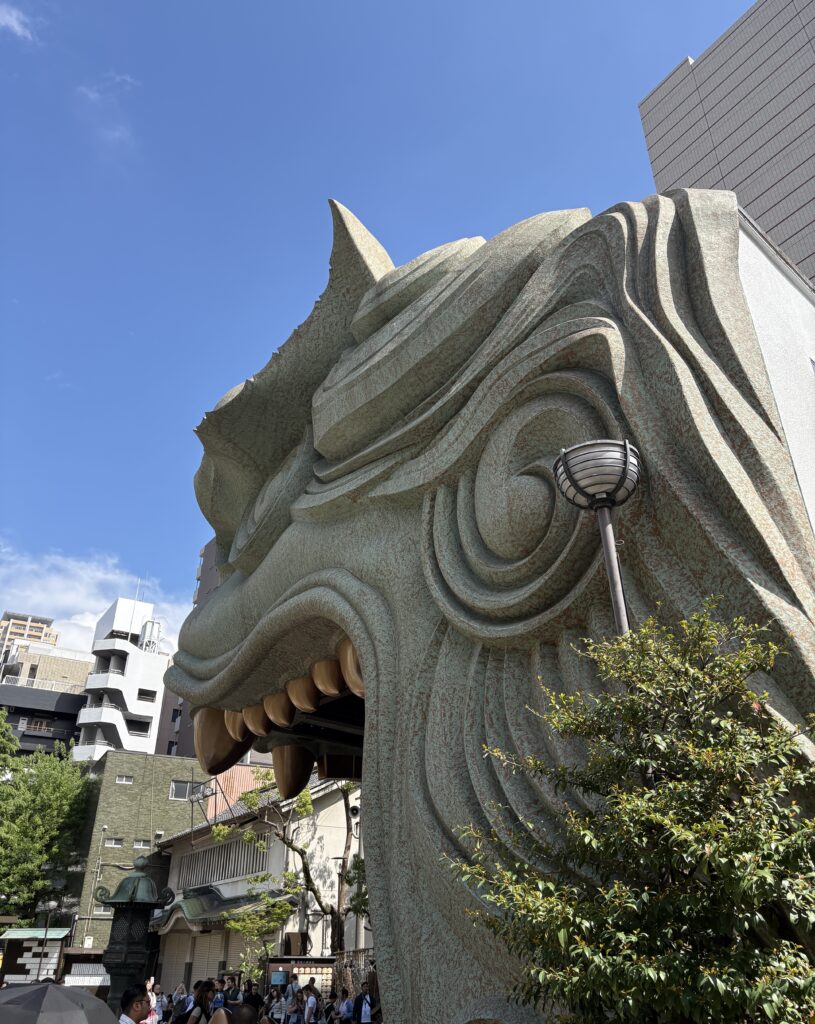
The Drawbacks to Visiting Osaka
Osaka has plenty going for it, but like any destination, it’s not for everyone. While the city’s food, friendliness, and energy win over many visitors, there are also aspects that might not appeal to every traveler.
I personally enjoyed my time here, but I can see how certain things might make it less of a fit depending on your travel style. Here are a few things to keep in mind before deciding how much time to spend here.
Shorter “Must-See” List
Compared to Tokyo or Kyoto, Osaka has fewer headline attractions, which means you can cover the main sights in just two to three days.
For some travelers, that’s a positive, less rushing, more time to soak things in, but if you’re after a long list of iconic landmarks, you might feel like you’ve run out of big-ticket stops fairly quickly.
Many visitors pair Osaka with day trips to Kyoto, Nara, or Kobe to keep their itinerary full.
Not as Distinct from Other Major Cities
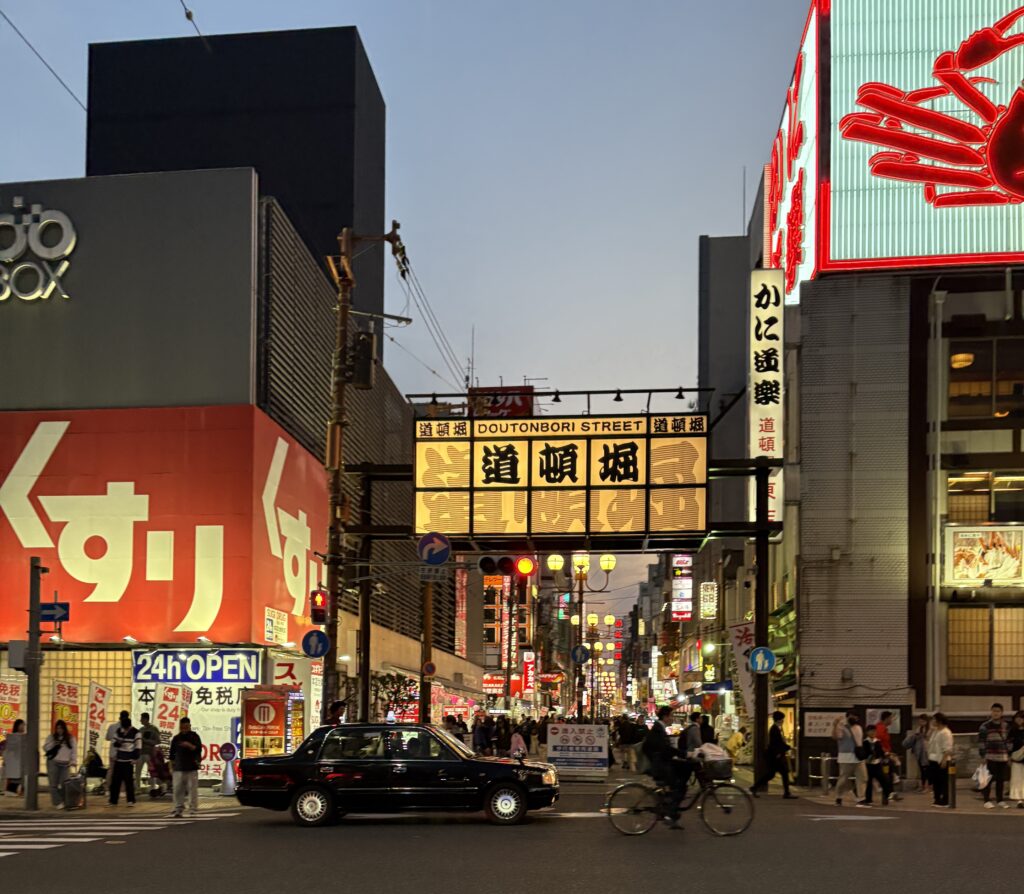
Putting Osaka’s incredible food scene aside for a moment, the city doesn’t always stand out as strongly as Tokyo or Kyoto when people think of Japan’s top destinations.
For most first-time visitors, Tokyo instantly comes to mind for its sheer scale, neon skyline, and unique big-city character, while Kyoto is synonymous with ancient temples, traditional streets, and historic charm.
Osaka, by comparison, can feel less immediately iconic. If you’re on a short trip and not a major foodie, the city might be a harder sell compared to its two more famous neighbors.
Can Feel Commercialized
While Osaka has plenty of authentic neighborhoods and local charm, certain areas feel designed with tourists in mind.
Places like Dotonbori are undeniably exciting, but they can also feel more like a theme park version of the city than everyday Osaka.
Bright neon signs, souvenir shops, and long lines for the most Instagram-famous food stalls often overshadow the more genuine side of the city.
If you stick only to these high-traffic spots, you might leave with a view of Osaka that feels curated rather than authentic.
Not Representative of the Rest of Japan
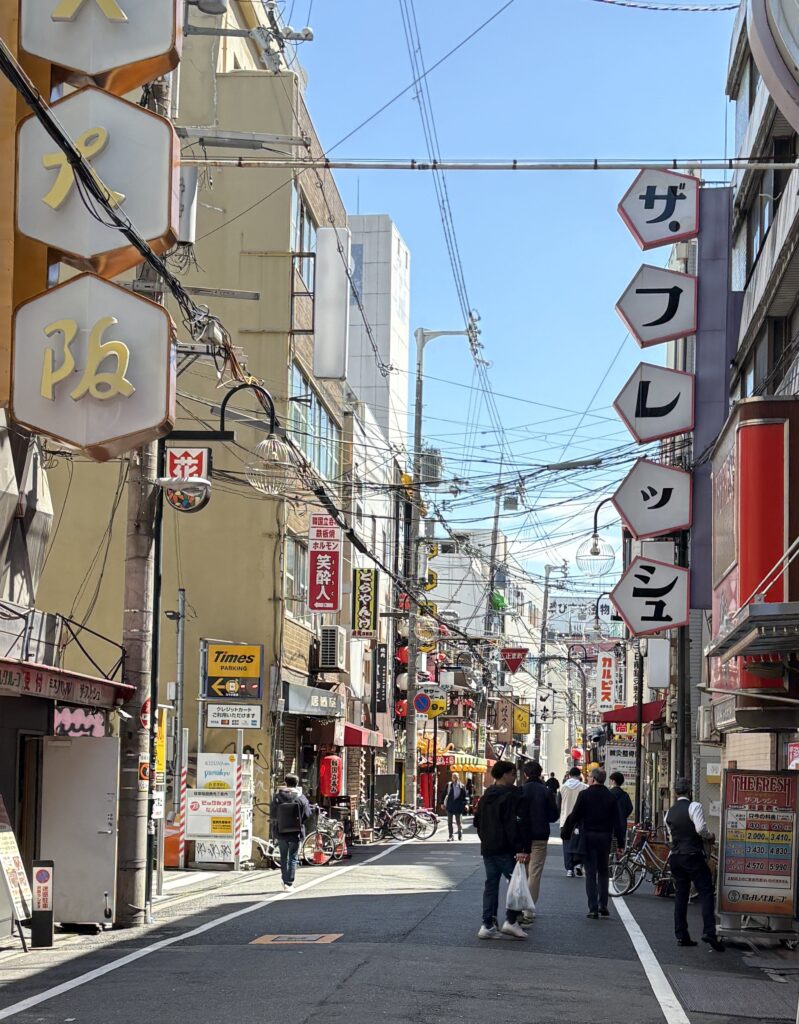
On my first trip to Japan a few years ago, I didn’t visit Osaka. I explored other parts of the country and came away with a strong sense of how culturally different Japan felt from the Western world, from the quiet, orderly streets to the emphasis on politeness and tradition.
When I finally visited Osaka on a later trip, I was genuinely surprised. In many of the main tourist areas, the norms I’d grown used to in Japan, minimal litter, no eating while walking, and a generally quieter public atmosphere, were far less noticeable.
Locals here tend to be more relaxed, more outspoken, and more casual, which is a big part of the city’s charm. You will notice many Japanese norms slide by here, unlike Tokyo or Kyoto.
However, that same easygoing nature means Osaka isn’t the most accurate reflection of Japan as a whole. If it’s the only city you visit, you might leave with the impression that Japan is less culturally distinct than it actually is.
While its food scene represents Japan brilliantly, the overall vibe is very much Osaka’s own, something that’s both a positive and, depending on your travel goals, a potential drawback.
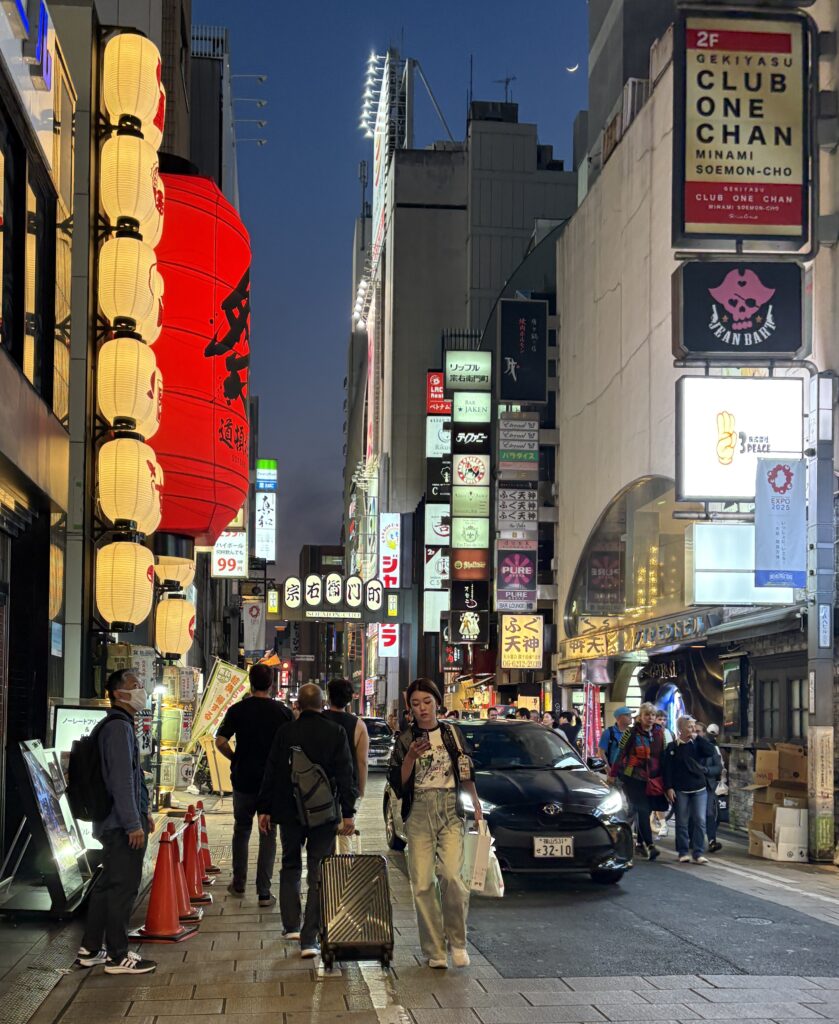
Who Will Love Osaka vs. Who Might Skip It
Osaka isn’t a one-size-fits-all destination. Depending on your travel style and how it fits into your Japan itinerary, you might fall head over heels for its energy and charm, or you might find it doesn’t match what you’re looking for in Japan.
Who Will Love Osaka
If you’re nodding along to these points, Osaka might just be your new favorite city in Japan:
- A must for foodies wanting to explore Japan’s street food capital.
- Travelers who thrive in a laid-back, social atmosphere.
- An ideal base for easy day trips to Kyoto, Nara, or Kobe.
- Nightlife lovers looking for entertainment beyond Tokyo.
- Visitors who enjoy cities with a more down-to-earth, approachable vibe.
Who Might Skip It
On the other hand, Osaka might not be your top choice if you agree with these:
- Travelers focused mainly on traditional temples and historic streets.
- Those who prefer quieter, less crowded destinations.
- Visitors on a very short Japan trip with limited time.
- First-time travelers wanting their introduction to Japan to center on tradition.
- Anyone seeking primarily scenic or rural landscapes rather than urban energy.

Travel Tips for Osaka
Osaka is easy to navigate, but knowing a few insider tips can make your visit smoother and even more enjoyable.
Whether you’re here for the food, sightseeing, or day trips, these suggestions will help you save time, money, and avoid common travel hiccups.
- Get a Suica or ICOCA card – These rechargeable transit cards work seamlessly on trains, subways, and buses across Osaka, Kyoto, and most of Japan, saving you time at ticket machines. You can install it on your phone also, which is easier!
- Take the Shinkansen from Tokyo – If you’re coming from the capital, the bullet train gets you to Osaka in about 2.5 hours, making it a fast and scenic way to travel.
- Stay near a major station – Areas like Namba or Umeda put you close to attractions, nightlife, and convenient transport links.
- Visit popular spots early – Famous areas like Dotonbori and Osaka Castle are far less crowded in the morning.
- Book restaurants in advance – Popular spots, especially Michelin-rated or themed eateries, often require reservations.
- Carry some cash – While card payments are growing, many small eateries and markets still prefer yen.
- Try day trips – Osaka is an ideal base for visiting Kyoto, Nara, and Kobe without changing hotels.
- Explore beyond Dotonbori – Some of the best areas in Osaka are outside the main tourist drag. Neighborhoods like Shinsekai, Kuromon Ichiba Market, and Nakazakicho offer a more local feel, with fewer crowds.
Join My Japan Travel Tips & Advice Facebook Group
Over 1,000 travelers sharing real-time tips, honest advice, and up-to-date experiences!
Final Verdict: Is Osaka Worth Visiting?
So, is Osaka worth visiting? For m, absolutely! The first thing that comes to mind is the food. I’m a total foodie, and in Osaka, I was in heaven. I ate my way through the city even more than I do in Tokyo, and that’s saying something.
From affordable Wagyu beef to street food classics like takoyaki and okonomiyaki, the quality and price point here made eating an absolute joy. Some meals I enjoyed in Osaka would have cost me noticeably more in Tokyo.
That’s my personal perspective, but I know not everyone travels for the same reasons. If you’re visiting Japan on a short trip, say 7 or 8 days, Osaka may not be a must. It’s farther from Tokyo than Kyoto is, and as I mentioned earlier in my Osaka vs Kyoto comparison, it doesn’t have the same immediate distinction.
Tokyo stands out as one of the world’s great mega-cities, Kyoto is iconic for its temples and history, but Osaka sits in betwee, vibrant, delicious, and fun, but not as instantly symbolic of Japan as those two.
If your time is tight, you might get more out of sticking closer to Tokyo or adding another destination near Kyoto, like Uji, Japan’s matcha capital. But if you have the time, Osaka offers a side of Japan that’s warmer, louder, more casual, and irresistibly tasty.
For travelers who love food, enjoy friendly locals, and don’t mind a city that breaks from Japan’s more reserved image, Osaka will likely win you over.
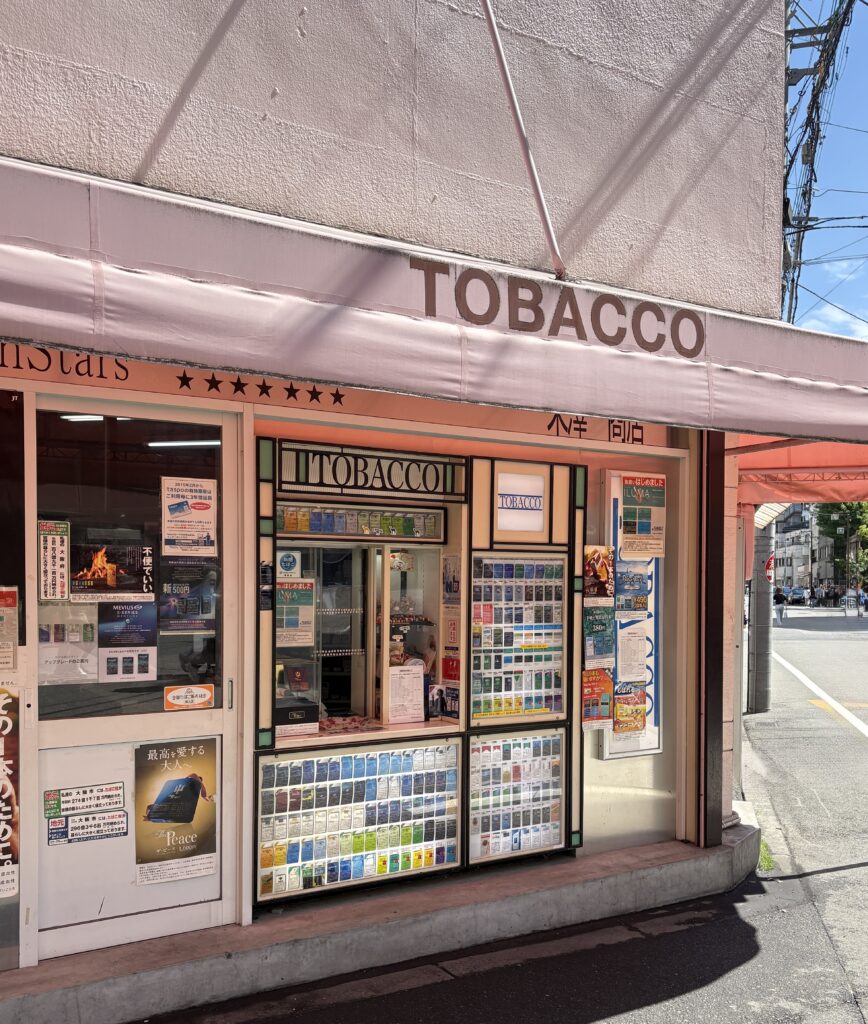
Is 2 days in Osaka enough for first-time visitors?
Yes, if you focus on major highlights like Dotonbori, Osaka Castle, and Universal Studios Japan, 2 days can give you a solid taste of the city.
But if you also want to explore nearby spots like Kyoto or Nara and properly explore the food scene in Osaka, adding an extra day or two is ideal.
Is Osaka walkable for tourists?
Central Osaka is very walkable, especially areas like Dotonbori, Namba, and Umeda. For longer distances or day trips, Japan’s excellent train network makes getting around simple and fast.
Is Osaka cheaper than Tokyo for tourists?
Generally, yes, accommodation, food, and transport tend to be slightly cheaper in Osaka compared to Tokyo, especially when it comes to street food and casual dining.
Can I visit Osaka and Kyoto in the same trip?
Absolutely, Kyoto is only about 15 minutes away by shinkansen (bullet train), making it an easy day trip. Many travelers base themselves in one city and visit the other to save on accommodation changes.

